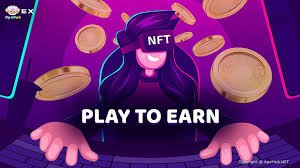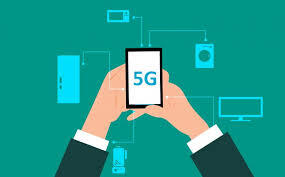Blockchain Gaming: Play-to-Earn Trends & What’s Coming Next
There’s a quiet revolution going on in gaming. It’s not about better graphics or new consoles. It’s about ownership, money, and freedom. Thanks to blockchain technology, players can now earn real income from their time spent in virtual worlds. And it’s shaking up everything we thought we knew about games.

From Hobby to Hustle
Gaming used to be simple. You played for fun, maybe bragging rights. But blockchain-based games have shifted the goalposts. Now you can actually earn money just by playing. These games fall under what’s called the “Play-to-Earn” or P2E model. That means when you win battles, collect rare items, or trade digital gear, you get crypto rewards or NFTs (non-fungible tokens).
Games like Axie Infinity led the charge, followed by titles like Decentraland and The Sandbox. The magic? You’re not just playing—you’re investing, trading, and sometimes even running a small business right from your laptop or phone.
What Makes Blockchain Games Different?
In regular games, you don’t really own anything. Buy a skin or item, and it’s stuck in that game forever. Lose your account? Too bad. The company still holds all the cards.
Blockchain turns that idea inside out. It uses decentralized tech to store items, characters, and currencies on public networks. You hold your assets in a wallet—just like holding your cash in a bank account. That means you can trade, sell, or move items between games if they’re built on compatible platforms.
This changes everything. Players go from consumers to owners.
NFTs: Not Just Hype
Let’s talk about NFTs for a second. In the gaming world, these digital tokens represent real items—characters, weapons, land, or even experiences. Each one’s unique, and that’s what makes them valuable.
In games like The Sandbox, people have bought virtual plots of land and built digital businesses on them. Others have collected rare skins or weapons they can trade on platforms like OpenSea for actual money.
Even better, some players loan out their NFTs to others and split the profits. That’s like buying a rental property and letting someone else pay you to use it. Pretty wild.
The Economy Is In Your Hands
Blockchain games aren’t just about earning. They’re about building entire economies—run by the players. Some games let you vote on decisions using tokens. These systems are called DAOs, short for Decentralized Autonomous Organizations. It’s like a town hall meeting, but online and backed by crypto.
This gives players a real say in how the game evolves. You’re not just stuck with developer decisions—you can shape the direction of the world you’re part of.
But there’s a downside. If a few people own a lot of tokens, they get more votes. So the system still has its power struggles.
What’s Trending Right Now?
Mobile Gaming Boom
Phones are becoming the home for blockchain games. It’s cheaper, more accessible, and reaches a global crowd. Games like Guild of Guardians and StepN are leading the charge.
Easier Wallets and Sign-Ups
Setting up wallets used to be confusing. Now, many games build that right in. No more ten-step tutorials. Just download, play, and earn.
Hybrid Models
Some developers mix blockchain with old-school design. You still get NFTs and tokens, but the game feels familiar. That balance helps attract gamers who might be hesitant to dive into full-on crypto worlds.
Creator-Driven Economies
Players are designing skins, hosting virtual concerts, and launching custom experiences—all within these platforms. This adds new ways to earn, even if you’re not into grinding or battling.
Regulations Are Coming
Governments are starting to notice. Crypto taxes, anti-money laundering rules, and consumer protections are on the rise. It’ll make the space safer, but possibly slower too.
Challenges That Need Work
Let’s be honest. Some P2E games aren’t fun. They’re more like chores—designed around making money instead of good gameplay. If people only play for income, and the income dries up, they’ll walk away. So fun has to come first.
Inflation’s another big issue. If everyone’s earning too much of a token, its value crashes. That’s basic supply and demand. Some developers are solving this by making tokens harder to earn or giving them more use in-game.
There’s also the environmental concern. Blockchain tech used to burn through lots of energy. But new systems like proof-of-stake use way less power, and that’s helping the industry clean up its act.
Where Things Are Headed
We’re still in the early chapters of blockchain gaming. The technology’s clunky in places, and lots of people are still skeptical. But things are moving. Fast.
Expect to see:
- Big studios entering the space: Ubisoft and Square Enix are already experimenting with NFTs.
- Interconnected worlds: Imagine taking your Fortnite skin into Minecraft. That’s the goal of interoperability.
- Games built around creators: The next big gaming star might not be a pro player but a designer building new worlds or NFTs.
In the end, it all comes down to value—emotional and financial. Blockchain gives players more control over both. It’s a shift away from playing for someone else’s profit and toward something that rewards your time, effort, and creativity.
And that’s not just a trend. It might be the new standard.




